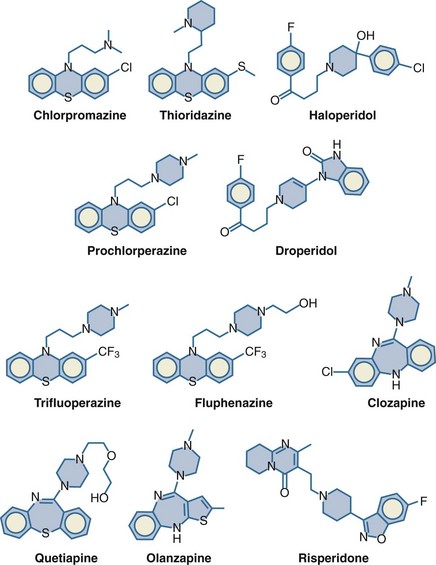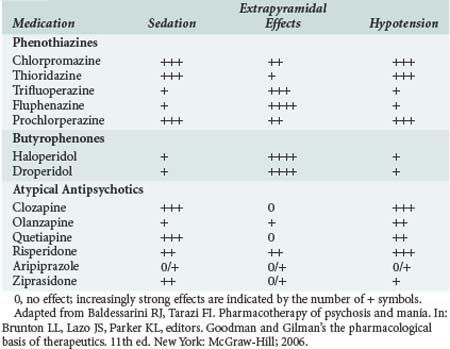182 Antipsychotics
 Pharmacology of Antipsychotics
Pharmacology of Antipsychotics
The antipsychotics can be divided into three categories based on their chemical structure and receptor-binding activities: phenothiazines, butyrophenones, and atypical antipsychotics. The prototypical antipsychotic agent in the phenothiazine class is chlorpromazine (Thorazine). Its pharmacology is discussed in detail in this chapter and then compared with that of the newer antipsychotic agents.1 The structures of some commonly used antipsychotics are shown in Figure 182-1.
In terms of the number of neurotransmitter systems with which it interacts, chlorpromazine is one of the “dirtiest” drugs in pharmacology. It is a competitive antagonist at the dopamine (D2), muscarinic, cholinergic, histamine (H1), α-adrenoceptor, and serotonin (5-HT2) receptors. It is believed that its primary antipsychotic effect results from dopaminergic blockade, whereas many (but certainly not all) of its adverse effects result from blockade of cholinergic (sedation, dry mouth) and α-adrenoceptor (orthostatic hypotension) receptors. The relative propensities of some of the antipsychotics to cause sedation, extrapyramidal effects, and hypotension are listed in Table 182-1.



